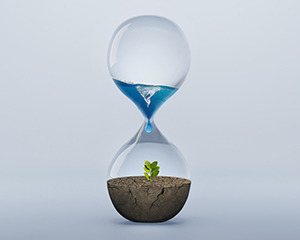Every year Italy reuses 200 million cubic meters of wastewater, only a third of Spain, despite having state-of-the-art Wastewater Treatment Facilities.
This year a new European regulation, which pushes the reuse of treated wastewater will become law, but there are some unsolved points (who will pay the extra costs? The Wastewater Facilities? Citizens? Farmers?).
The target is to treat drainage that goes into the collection system to make the water compatible with crop irrigation and industrial purposes. In some area of the country, mainly in the North, this thing has been done for years. But the current drought situation that is bringing the farmers to their knees probably will give a boost to the reuse of treated wastewater. Moreover, in 2020 the European Union adopted a regulation for water reuse in farming, establishing minimum levels of quality.
The regulation must be applied by the various member states starting June 2023, but there are still various unsolved points, like who will pay the extra costs to make the water coming from wastewater treatment plants suitable for the safe growth of fruits and vegetables.
In Italy, recovering wastewater for agricultural or industrial purposes is not new. A ministerial decree establishes the limits that have to be respected which began in 2003, imposing some parameters (for example indicators of pathogenic contaminants) similar to those of the highest quality class planned today by the European regulation, which defines different classes according to the type of crop and the type of irrigation.
Unfortunately, we are not the European country that does the best in terms of the amount of reused wastewater, but we do have plants that have been pioneering this. In Milan, Nosedo and San Rocco WWTP’s supply 90 million cubic meters of treated waters per year, which can be used to irrigate fields around the county seat. As well, wastewater treatment plants in the province of Livorno supply up to 4 million cubic meters of treated water for the Solvay group plant in Rosignano.
According to an estimate made in 2020, around 200 million cubic meters of treated water is destined for irrigation and industrial uses, between direct and indirect reuse.
The latest annual report of Arera speaks of 23% of the wastewater as targetable for reuse, but only 4% is actually reused, mostly in the Northern regions and above all for agricultural purposes. In particular, the data refers to direct reuse, which will be governed by the European regulation.
Utilitalia, the federation of water, environmental and energetic businesses, has given slightly different numbers. In the survey “the reuse of waste waters in Italy”, presented the 11th of July 2022 at Naples, it has been estimated that 79 plants can supply treated waters for reuse, for a total potential of 475 million cubic meters per year, between direct and indirect reuse. This is equal to 5% of the 9 billion cubic meters coming out from wastewater treatment plants.
Specifically, 37 plants supply water for indirect irrigation reuse, 10 supply water for direct irrigation reuse, and 9 for industrial use or others. For the other 23 plants it was not specified a final use, "demonstrating - note from Utilitalia - the uncertainties and doubts still present at the level of potential end users". Among the factors that have so far limited the direct reuse of wastewater, there is the fact that to achieve the required purification, integration of existing plants is often necessary, above all by enhancing the final filtration and disinfection sections, the so-called "Tertiary Treatment".
The Italian situation fits into a European context where other countries, especially in the Mediterranean, have adopted measures on reuse over time. Spain and France, according to data from the European Environment Agency, reuse respectively 600 and 400 million cubic meters of treated waters per year, a figure in this case to be compared with the less than 100 million cubic meters attributed by the agency to Italy as direct reuse, therefore considerably more than us here. Or for example, Cyprus, where almost all the wastewater is reused.
Following some recent studies much can still be done: reuse could cover the 20% of irrigation necessity in Spain and Portugal and as much as 45% in Italy and France.
The European Union has adopted a regulation ad hoc, so that the reuse of wastewater comes up beside other interventions, such as increasing the storage capacity of reservoirs and making irrigation systems more efficient. All these measures are necessary to counter the erosion of water resources caused by anthropic pressure and climate change, which have made periods of drought such as the current one more and more frequent.
The regulation aims to create common rules in order to remove the obstacles to the free movement of agricultural products irrigated with treated water. It also invites the member states to carry out communication and awareness-raising campaigns to encourage the use of reclaimed water in agriculture which, once properly treated, could also be used for drinking purposes, as indeed happens in some countries, including United States and Israel.
Furthermore, it must be considered that our country has not always shone in terms of wastewater treatment: in recent years the treatment of wastewater has improved in Europe, but Italy is still far below the EU average. In Italy, only 56% of wastewater is treated following the UE directive, verses 76% for Europe on average, and in fact European level four infringement procedures have already been opened against Italy. Drought has to be fought today with the reuse of water coming from our wastewater treatment plants: to increase the reuse of treated waters important investment policies are needed, which are the result of a necessary greater sensitivity in the political world to this technical solution, starting with the streamlining of bureaucratic procedures for the entire reuse chain.
Today we have all the tools to solve the problem, we just have to decide to use them in the best way.

Drought, in Italy we reuse just the 4% of wastewater
03/27/2023
